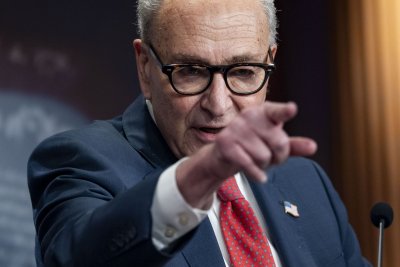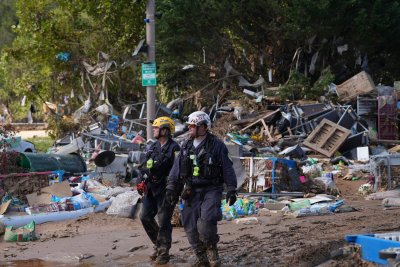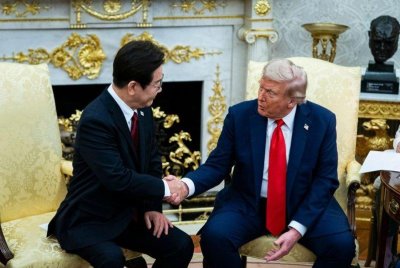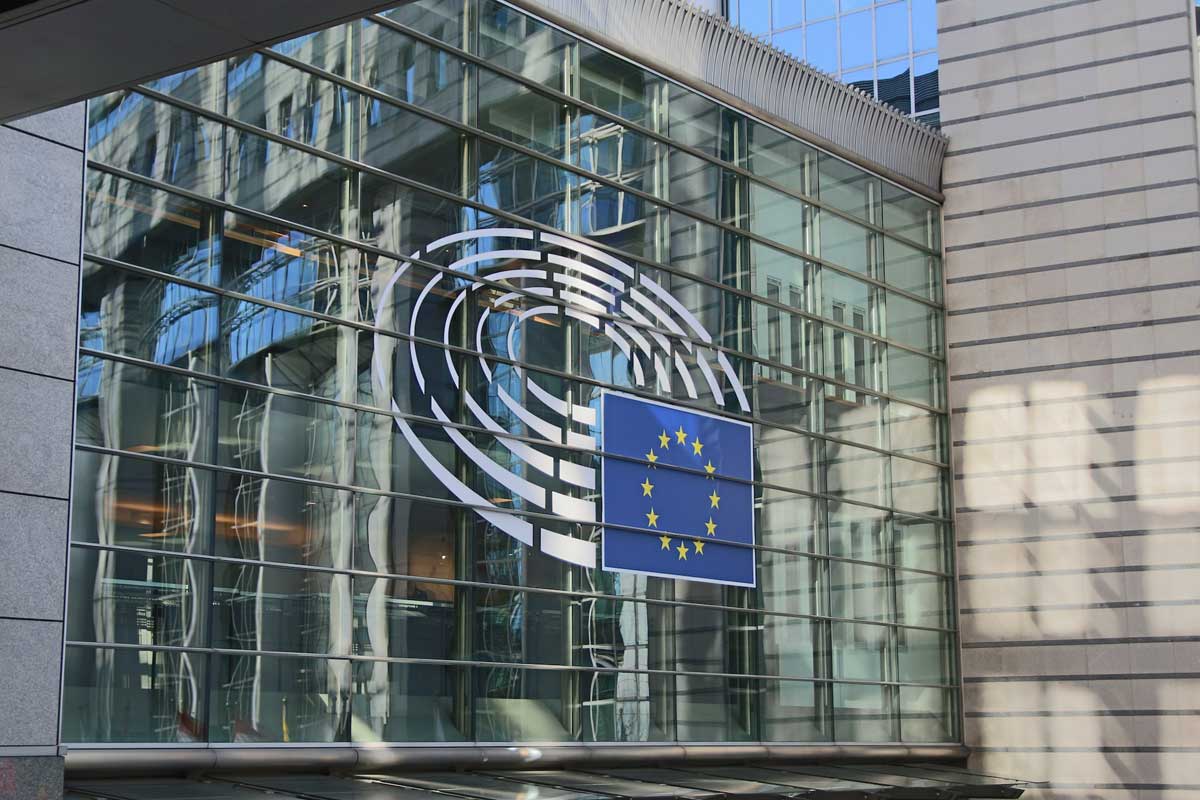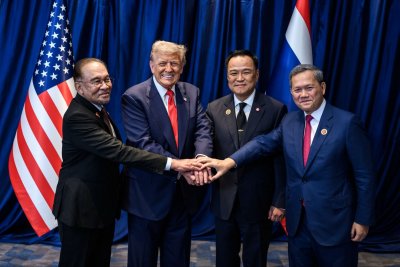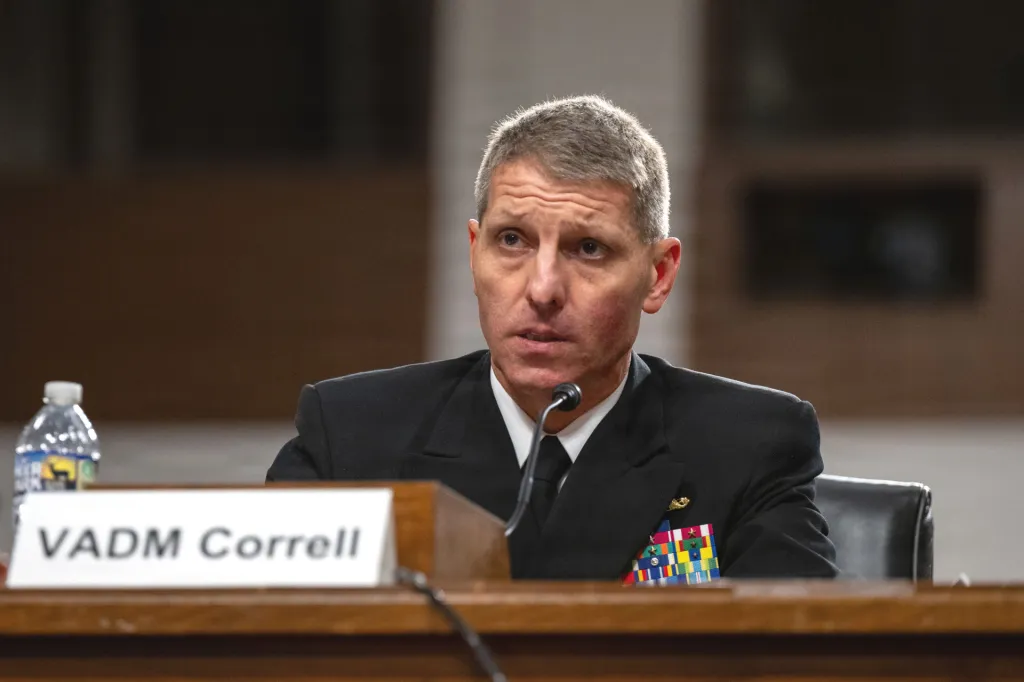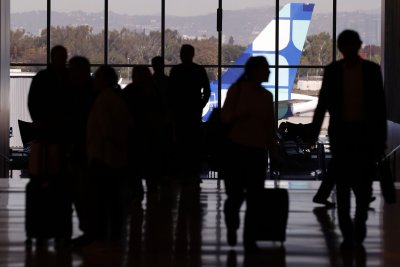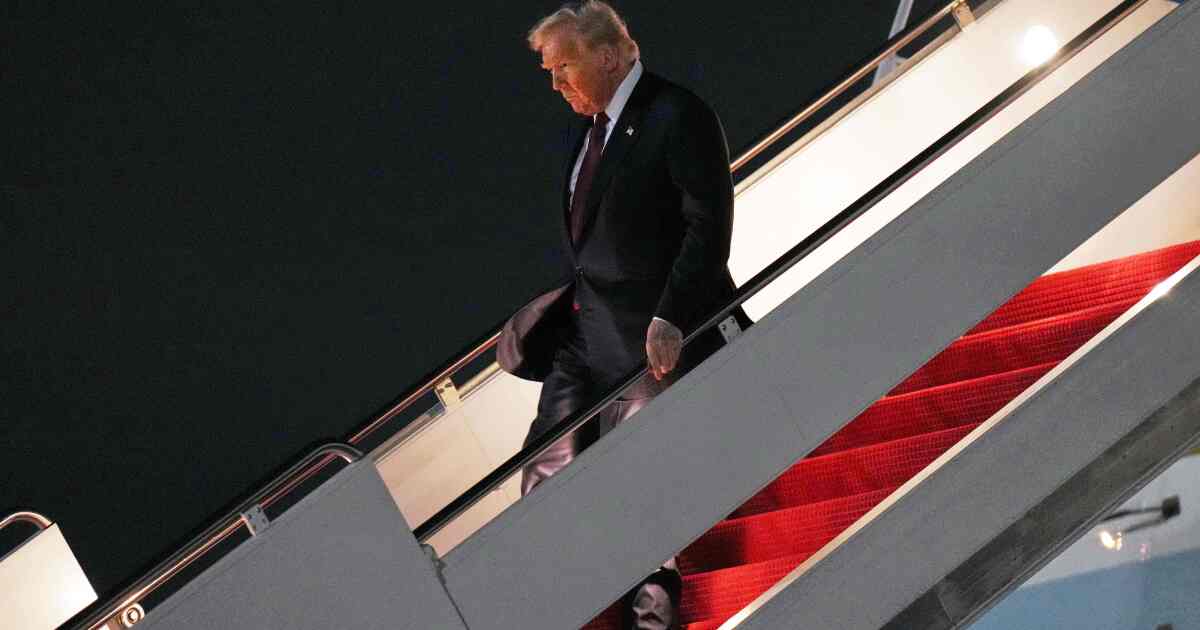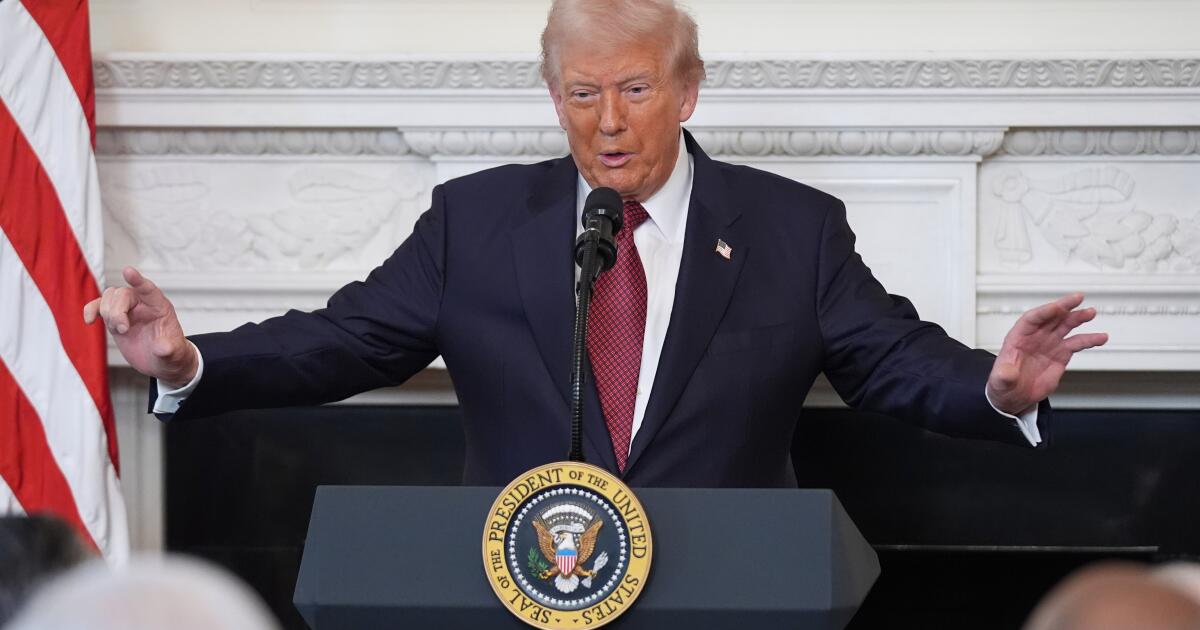Nov. 6 (UPI) — President Donald Trump’s calls to ramp up nuclear weapons testing last week have put nuclear watchdogs and world leaders on alert while experts say the United States has little to gain.
In a post on Truth Social on Oct. 29, Trump said he is ordering the Department of Defense to immediately begin testing nuclear weapons “on an equal basis.” What this means remains unclear, though Energy Secretary Chris Wright said in an appearance on FOX News these would not be full-scale explosive tests.
“These are not nuclear explosions,” Wright said. “These are what we call non-critical explosions.”
The comment by Wright echoes the stance Brandon Williams, under secretary of energy for Nuclear Security in the Department of Energy, shared during his Senate confirmation hearing in May. Williams said testing nuclear weapons above the criticality threshold would not be advisable.
According to the International Campaign to Abolish Nuclear Weapons and Nuclear Weapons Ban Monitor, the United States possesses more than 5,000 nuclear weapons. It has performed 1,054 explosive nuclear tests, more than any other country.
The type of testing the president is calling for is an important distinction to make, Dylan Spaulding, senior scientist for the Union of Concerned Scientists, told UPI. The delivery systems of nuclear weapons and the components of the weapons are commonly tested.
Subcritical tests are also performed. These are tests that do not yield a sustained nuclear reaction that would cause an explosion.
“He did mention testing on an equal basis,” Spaulding said. “If that’s the case, in fact the United States already does conduct all the kinds of tests of our nuclear delivery systems and even the components of the weapons themselves that other countries do.”
The United States and most of the rest of the world, aside from North Korea, have refrained from full-scale nuclear weapons testing for more than 30 years. In 1993, the United States signed a unilateral moratorium on explosive testing under the Comprehensive Nuclear Test Ban Treaty.
Breaking from the treaty is likely to open the door to escalation in the form of other countries, including adversaries like China and Russia, openly testing nuclear explosives, Henry Sokolski, executive director of the Nonproliferation Policy Education Center, told UPI.
“What if those countries decided that maybe this is a cue for them to test?” Sokolski said. “Would that provoke any of the larger states that signed [the treaty] but didn’t ratify to test?”
The only country to break from the agreement in this treaty is North Korea, conducting six nuclear tests concluding in 2017.
Sokolski argues that the United States has the least to gain by breaking the moratorium and setting off a precedent for open nuclear weapons testing. The United States’ research in the field is extensive, beyond that of any other country. Other countries, such as Russia, China, India, Pakistan and North Korea stand to benefit the most from more explosive research while the United States would likely gain little more knowledge.”
“I spend a lot of time talking to weapons designers about this. You don’t test for reliability testing generally,” Sokolski said. “That requires 10 to 20 datapoints. That means 10 to 20 tests of each design. That seems kind of wasteful. You don’t design to prove things you’ve already proven.”
“If you’re doing a design that is totally radical, that’s something different, but we’re not,” he continued. “We’re fiddling with yield-to-weight ratios. There are countries like Israel who have tested once, in 1979, one test. Are you telling me their stockpile is unreliable and doesn’t work? If you want to make weapons you can do it very cheaply and quickly without testing.”
Spaulding agrees that full-scale testing is not necessary, adding that scientists continue to analyze data from the repository of the United States’ nuclear weapons testing history.
“We are still learning from those underground tests,” he said. “Other countries don’t have that advantage right now but we would be essentially giving them permission to catch up by returning to testing.
The argument for more live-testing of nuclear weapons capabilities is that it can insure and assure that the stockpile of weapons is reliable.
The United States has the Stockpile Stewardship Program that already tests the reliability and safety of its nuclear weapons. Daryl Kimball, executive director of the Arms Control Association, told UPI the scientific community is “very confident” in the program.
While the United States is one of only nine countries that have not ratified the treaty, it is legally bound as a signatory to not violate the object or purpose of the agreement, Kimball said. He is doubtful that this will deter Trump.
Of the 1,054 explosive nuclear tests performed by the United States, 928 have been conducted at the Nevada Nuclear Site in south-central Nevada about 65 miles outside of Las Vegas. The site is the only candidate for hosting further nuclear testing, according to experts.
The last explosive test was conducted in 1992 before the United States began observing the international moratorium.
Past tests at the site yielded observable health and environmental impacts on residents of the region and beyond.
“Anyone born in ’63 or earlier, they were exposed to some level of strontium 90, which was showing up in the baby teeth of American children in the 50s and 60s,” Kimball said. “It accumulates in the teeth because you drink milk and it gets concentrated in the teeth.”
The United States joined the Soviet Union and United Kingdom in the Limited Test Ban Treaty in 1963, in part because of the baby teeth study. The treaty banned nuclear weapons testing in the atmosphere, outer space and underwater.
Subjects of the baby teeth study were children in the St. Louis area, more than 1,600 miles from the Nevada nuclear test site.
With the atmospheric testing ban in place, explosive testing was moved underground in deep boreholes. This was meant to limit nuclear fallout, lessening environmental and health implications.
The vertical testing shafts are reinforced to limit geological impacts but the powerful explosions still generate fractures in the earth and the leakage of radionuclides, a hazardous radioactive material.
People who lived downwind of the Nevada test site, known as downwinders, have experienced higher than average rates of cancer.
“These downwinders, in their second generation, they’re still suffering from some of these adverse health effects,” Kimball said. “They are particularly angry. Trump’s announcement is a slap in the face to them as they see it. They want to see all forms of testing, above and below ground, concluded.”
Restarting full-scale testing would be no small task, Sokolski said. What he refers to as a “quick and dirty” test, one that provides an explosion but little in the way of research, would take months and millions of dollars to prepare.
“To get data, depending on how much data, we could be talking about one to two years and much, much more money, maybe approaching a higher order of magnitude, a billion [dollars],” Sokolski said. “Those stumbling blocks are the ones of interest.”

